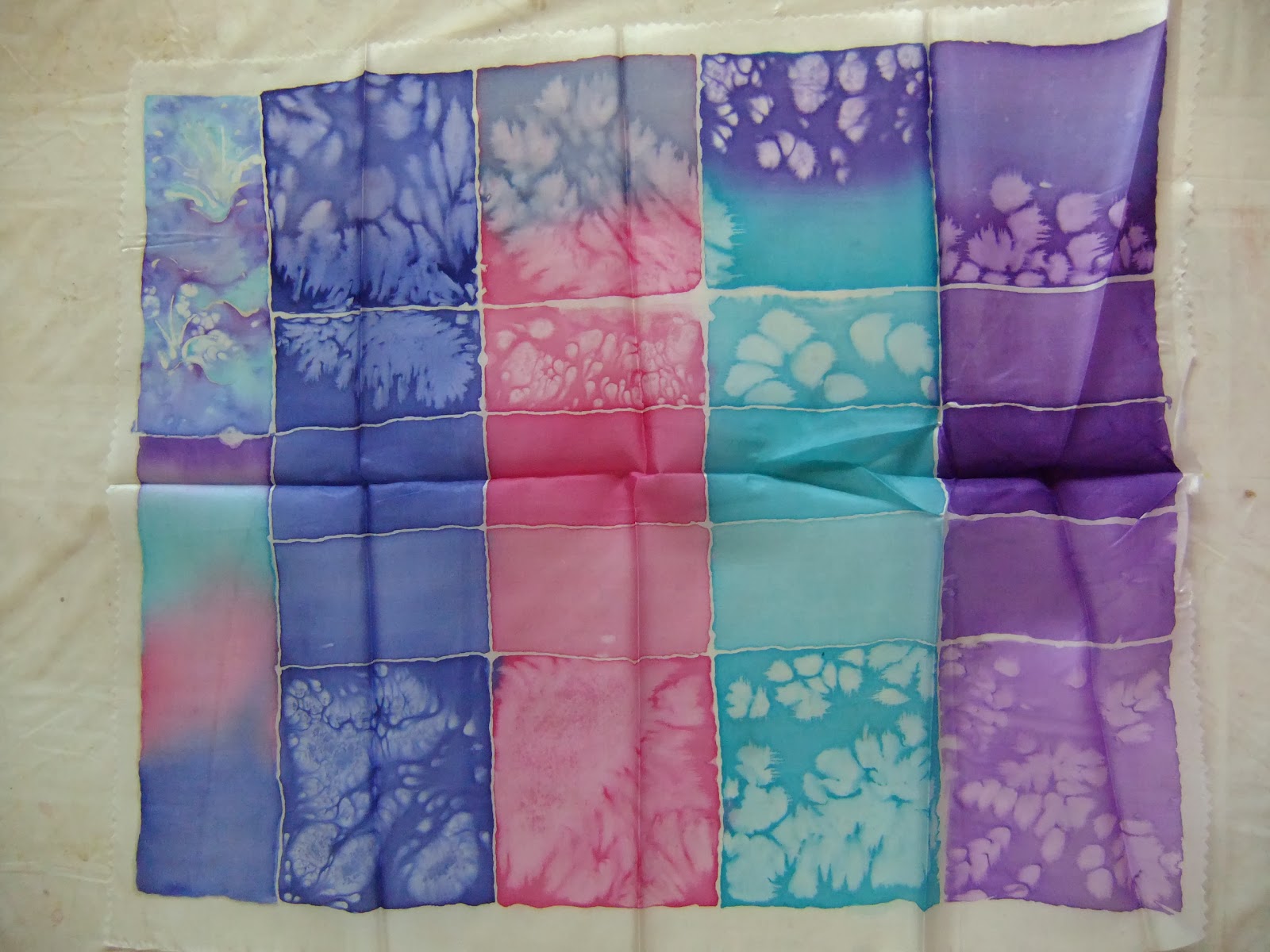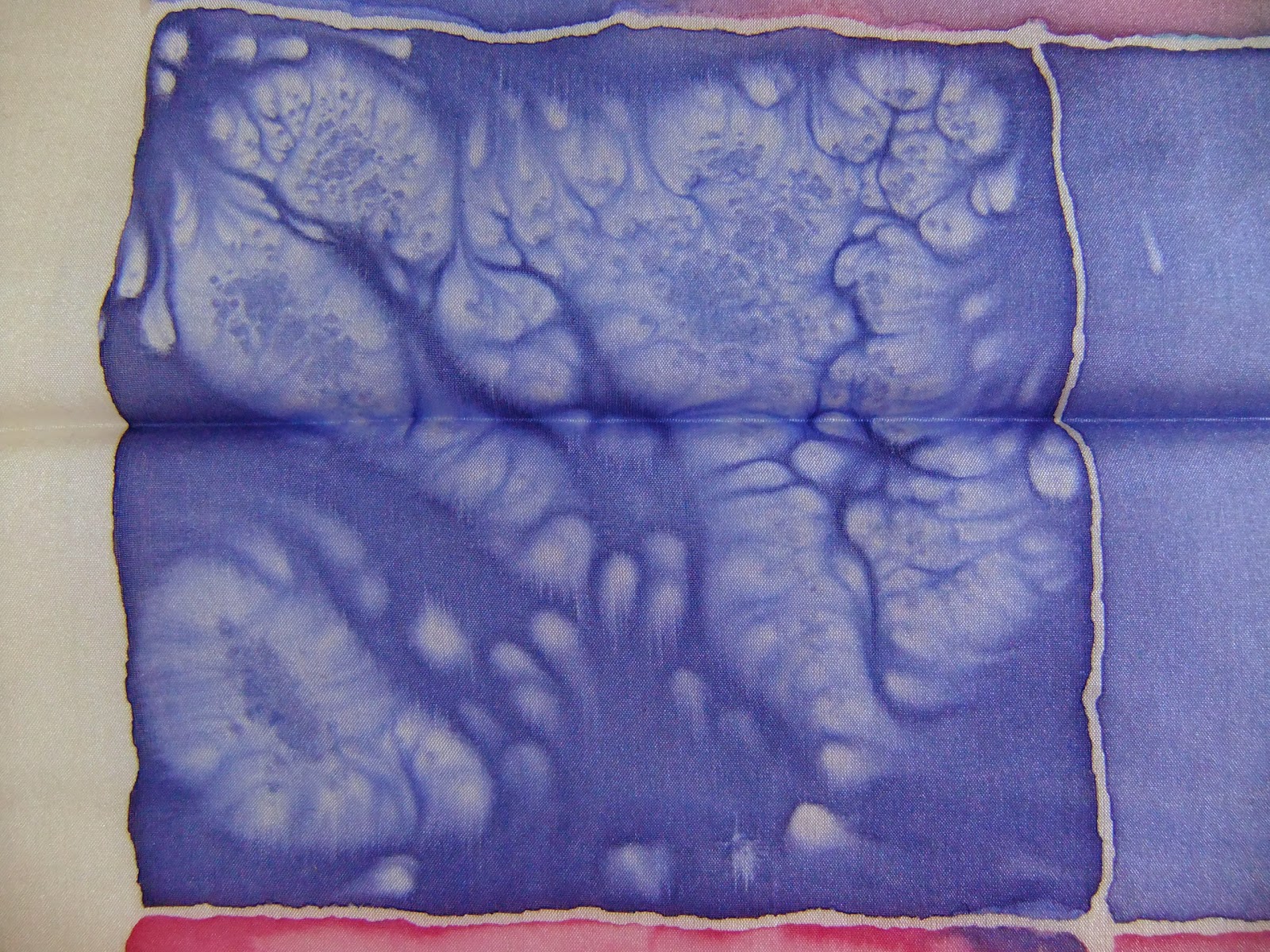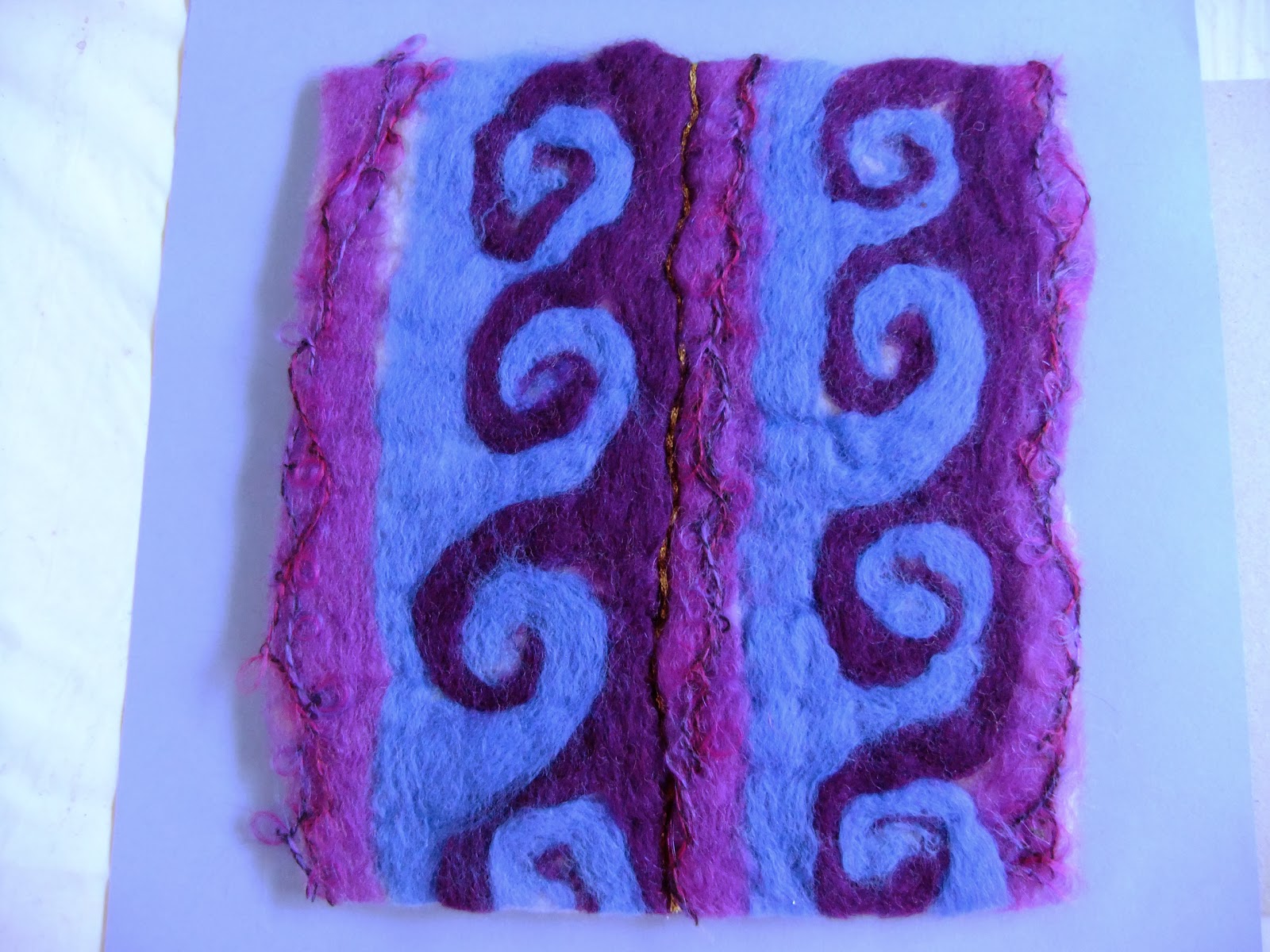Drawing on my wave theme I selected some source images from my collection that I felt had potential for development into interesting designs. A greetings card provided the inspiration for the wave shape....
A postcard provided the colour inspiration....
Before I finally settled on waves as my theme I experimented with alternative interpretations of ocean/water themes from my mind map. Utilising the colours on the card, I made a selection of drawings and samples extrapolated from words that I felt were appropriately expressive and creative.
I selected splashing, undulating (rippling) and crashing (waving).
Beginning with the basic idea I made a very quick line drawing for each of my chosen words. I wanted a bold, simple image that could be readily translated into a range of different forms - scalable and with scope for interpretation across different media.
Splashing
Undulating (rippling)
Waving
Once I was happy with the line drawings, I painted a ceramic tile thickly with gouache paints and used a cotton bud to recreate the image that represented my chosen words. I then used paper to create prints of each image.
Splashing
Undulating
Waving
For the next stage I considered how each pattern could be developed into a finished textile project. My initial idea had been to create a waistcoat so I drew a couple of quick sketches showing how the pattern might be applied to the fronts of a waistcoat.
Splashing
Undulating
Waving (horizontal)
I also tried a slightly quirkier version, adding in the dolphin's tail emerging from the waves...
And a coloured version....
Splash design
I liked the splash image and thought this would look interesting on silk, so I tried sampling various colours, using deka salt to create the foam/bubble effect and table salt for smaller droplets.
I experimented with a clear gutta to create the splash and droplets.
I did a further sample using gold gutta and fine table salt to create bolder, highlighted splashes and delicate droplets...
I liked the colours of the silk samples and the splashing pattern was really quite attractive with the fine salt and the gold or clear gutta. However, I didn't feel that the pattern would scale up well and it didn't look right in the pencil sketch as a repeat pattern. It was also quite difficult to achieve the desired effect and it was slow to create. This would make it impractical for a project which was for resale. I'd like to come back to this for a different project, perhaps a cushion or bag front, or maybe a long wrap?
Wave design
For my next sample I chose the wave design. My initial sample used hand-stitched chain stitches worked in hand-dyed stranded cottons onto hand-marbled thin card. The card would be replaced by a fabric in the finished piece. I mounted this into a dolphin's tail for added interest.
Conclusion:
Again, this was a time-consuming sample to make, particularly taking into account the hand-dyeing and hand-marbling. This could be speeded up by using a commercial space-dyed thread and by using a marbled fabric. The sample could be resized and the scale altered, however, I feel that this design would be very intense covering the entire front of a waistcoat. It would be interesting to play with other mounting shapes and perhaps to use a wadding/quilting and maybe reverse applique for a fun book cover, cushion front or bag.
Wave design (vertical)
As I still liked the wave pattern I decided to try an alternative medium. For the next sample I turned the design through 90 degrees to create a vertical repeat. I added a wave-line to delineate the repeat and create a strong vertical line.
I then sketched this onto a waistcoat front....
Felt sample
I used pure wool and a wetfelting technique to create this pattern. For the lines I added a hand-stitched gold thread.
Conclusion:
This piece was heavy and lacked drape so wouldn't be suitable for the intended waistcoat project. It would, however, be suited to a project requiring a more sturdy fabric. I wouldn't completely rule out a garment but it would need to take into account the weight and stiffness of the resulting fabric. Perhaps an outer garment? Alternatively, it would be a great pattern for a rug, large bag/holdall or soft furnishing. It may be necessary to needlefelt the finer parts of the design and to wetfelt more thoroughly if using for an object which would be subject to wear as otherwise pilling and fluffing may occur.




































